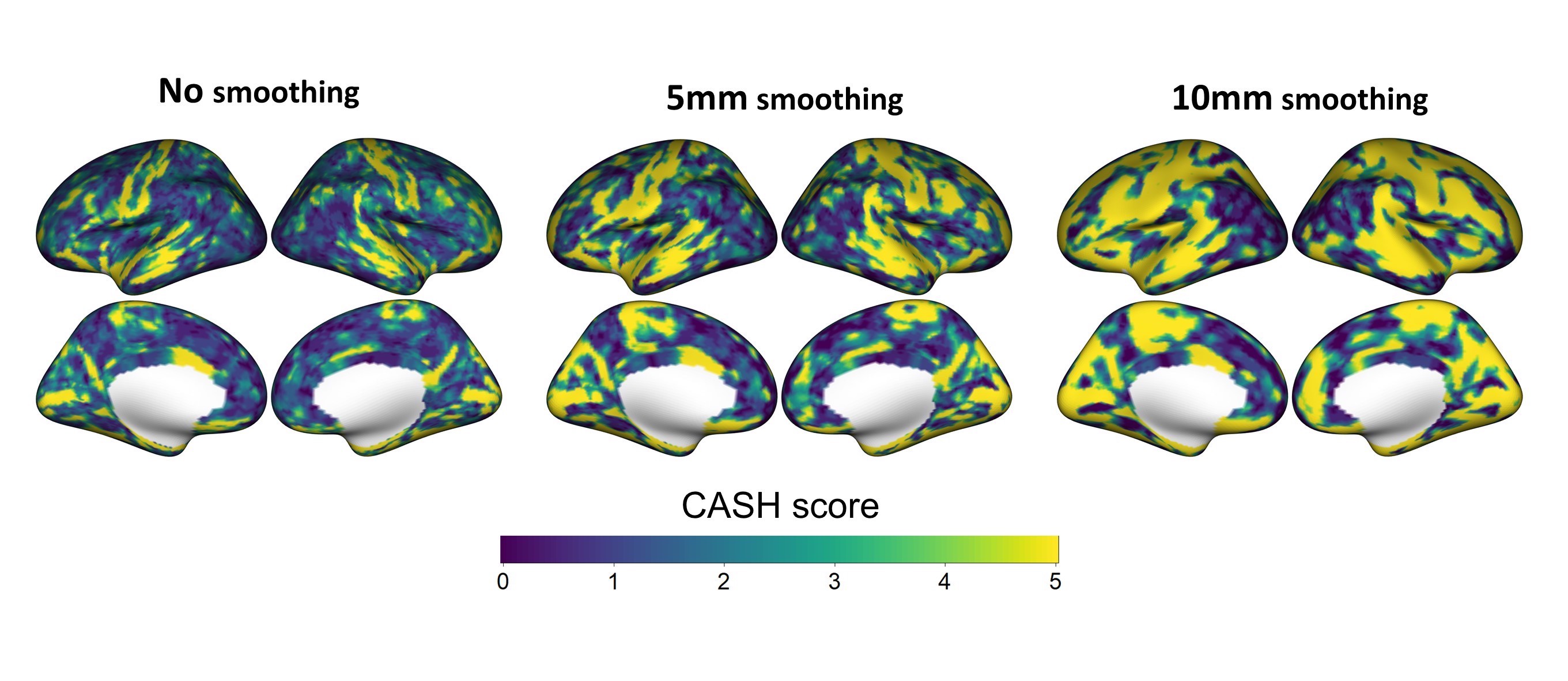Spatial Autocorrelation Normalization
R package to apply SAN to harmonize heterogeneous spatial covariances in multi-site, multi-scanner neuroimaging studies.
Zhang, R., Chen, L., Oliver, L. D., Voineskos, A. N., Park, J. Y. (2024). SAN: mitigating spatial covariance heterogeneity in cortical thickness data collected from multiple scanners or sites. Human Brain Mapping link
SAN supports harmonizing vertex-level neuroimaging data (e.g., cortical thickness) collected from multiple sites and/or scanners. By using a distance matrix to model covariance heterogeneity probabilistically, SAN provides promising harmonization performance than other methods.
To install the latest development builds directly from GitHub, please run the followings:
if (!require("devtools"))
install.packages("devtools")
devtools::install_github("junjypark/SAN")SAN() is the main function that takes (almost) the same input names as neuroCombat. Specifically, the following need to be provided.
dat: a (p x n) data matrix, where p is the number of features and n is the number of subjects (required)batch: Batch variable for the scanner id (required)mod: a (n x q) matrix containing biological covariates (optional). This can be obtained by usingmodel.matrix()function in R. However, when you usemodin SAN, ensure your covariate of interest (for hypothesis testing) is excluded. In practice, SAN preserves covariate effects well even though it is not specified as an input.distMat: a (p x p) matrix containing pairwise distance information. The diagonal entrys should have 0 values.
Now, the SAN can be applied to obtain the harmonized data.
fit = SAN(dat=dat, batch=batch, mod=mod, distMat=distMat)We recommend using geodesic distance for mesh surfaces. You may use Python or C++ to obtain a pairwise geodesic distance matrix.
It requires the extraction of vertices and faces matrices. The vertices matrix contains the 3D coordinate for each vertex, and each row of the faces matrix contains the indices of three vertices that construct a triangle in the mesh surface. In Freesurfer, the surface file (e.g. lh.pial (recommended) or lh.inflated) can be used to extract vertices and faces (see read.fs.surface() in the freesurferformats R package). Once you load vertices and faces, the following manipulation is necessary due to the difference between R and Python.
surf$faces = surf$faces-1